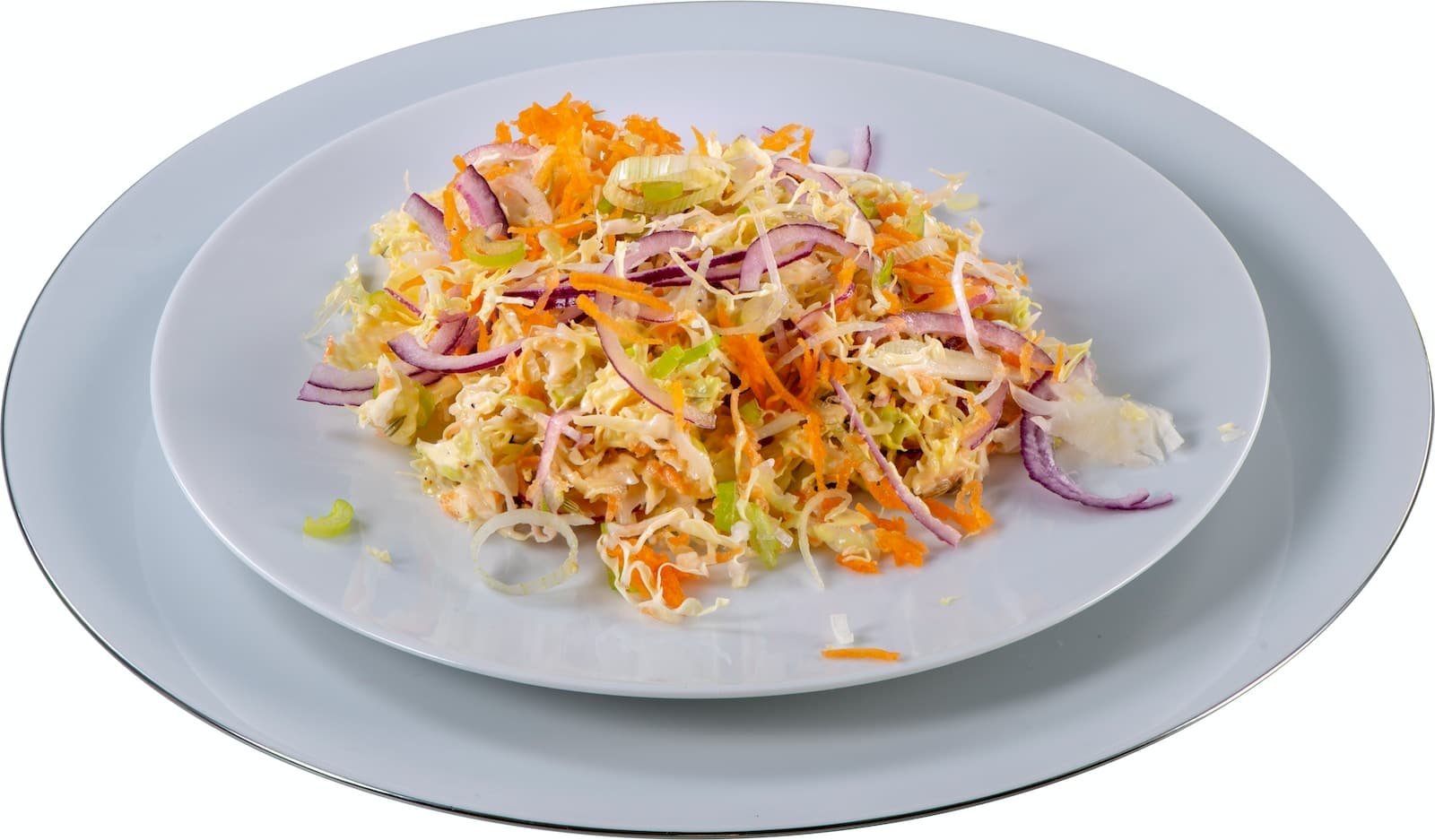I know what you’re thinking: “Freeze coleslaw? Can you even do that?” Absolutely! With a bit of know-how and some food safety tips, you can save that slaw for another sunny day. So, let’s dig into the chilly details of freezing coleslaw, keeping it safe and delicious for your family to enjoy later on. Grab your favorite wooden spoon, and let’s get started!
Understanding Coleslaw: The Basics
Coleslaw is typically made from shredded cabbage, carrots, and other veggies, tossed in a dressing that can be vinegar-based or creamy, often with mayonnaise. The key to successfully freezing coleslaw is understanding how these components react to cold temperatures.
Creamy coleslaw can separate and become watery after thawing because of the mayonnaise, while vinegar-based slaw tends to freeze a bit better. However, with the right preparation, both types can be frozen for future use.

Preparing Coleslaw for Freezing
Here’s a step-by-step guide to preparing your coleslaw for the big chill:
- Make Your Slaw: Whether you’re going creamy or vinegar-based, start by making your coleslaw fresh. Use crisp vegetables for the best texture after thawing.
- Portion Control: Think about how much coleslaw your family typically eats in one sitting. Divide your slaw into these portions using freezer-safe bags or airtight containers. This way, you only thaw what you need.
- Squeeze Out Air: If using freezer bags, try to squeeze out as much air as possible before sealing. This reduces freezer burn and helps preserve the flavor and texture of your slaw.
- Label and Date: Use a permanent marker to write the date and type of coleslaw on each container or bag. Trust me, freezer time travel is real, and you’ll thank yourself later for labeling.
- Flat Freeze: Lay the bags flat in the freezer. This saves space and makes the thawing process quicker.
- Quick Tip: For creamy coleslaw, consider draining the dressing before freezing and adding a fresh batch when serving. It’s an extra step, but it can help maintain a better texture.
Freezing Coleslaw: The Do’s and Don’ts
- Do use fresh ingredients. Freshness is key to maintaining quality after freezing.
- Don’t wait too long to freeze. The sooner you freeze your slaw, the better the quality will be once thawed.
- Do consider blanching your vegetables if you want to preserve color and texture. This step isn’t mandatory, but it can help, especially for longer storage periods.
- Don’t overfill containers. Leave a little space for expansion as the slaw freezes.
Thawing and Serving Frozen Coleslaw
When you’re ready to defrost your coleslaw, patience is a virtue. Here’s how to do it:
- Thaw Slowly: Move your coleslaw from the freezer to the refrigerator at least 24 hours before you plan to serve it. This gradual thaw maintains texture and reduces sogginess.
- Drain Excess Liquid: After thawing, there may be extra liquid. Drain it off to avoid a watery coleslaw.
- Refresh the Flavor: Add a splash of vinegar or a dollop of mayonnaise to freshen up the flavor before serving. A quick toss with some fresh herbs can also work wonders.
- Serve Chilled: Coleslaw is best served cold, so keep it in the fridge until you’re ready to dish it out.
Food Safety Considerations
According to the CDC and FDA, it’s vital to keep food safety at the forefront when handling and storing perishable items like coleslaw. Here are a few tips:
- Always wash your hands and surfaces before preparing food.
- Use clean utensils and cutting boards to avoid cross-contamination.
- Keep your freezer at 0°F (-18°C) to ensure foods are frozen properly.
- Never refreeze thawed coleslaw, as this can increase the risk of foodborne illness.
Key Takeaways
Freezing coleslaw is a fantastic way to extend its shelf life and ensure you always have a side dish on handfor those spontaneous summer gatherings or quick family meals. Here are the key points to remember:
- Choose the Right Type: Vinegar-based coleslaw freezes better than creamy, but both can be frozen with proper preparation.
- Prep and Portion: Prepare fresh, divide into meal-size portions, and remove as much air as possible to protect the quality.
- Label and Flat Freeze: Always label with the date and freeze flat to maximize space and efficiency in your freezer.
- Thaw Safely: Always thaw coleslaw in the fridge to maintain texture and safety.
- Refresh and Serve: Drain excess liquid after thawing and add a touch of fresh dressing or herbs to perk up the flavor before serving.
- Food Safety: Keep your hands, surfaces, and utensils clean. Store coleslaw at safe temperatures and do not refreeze once thawed.



